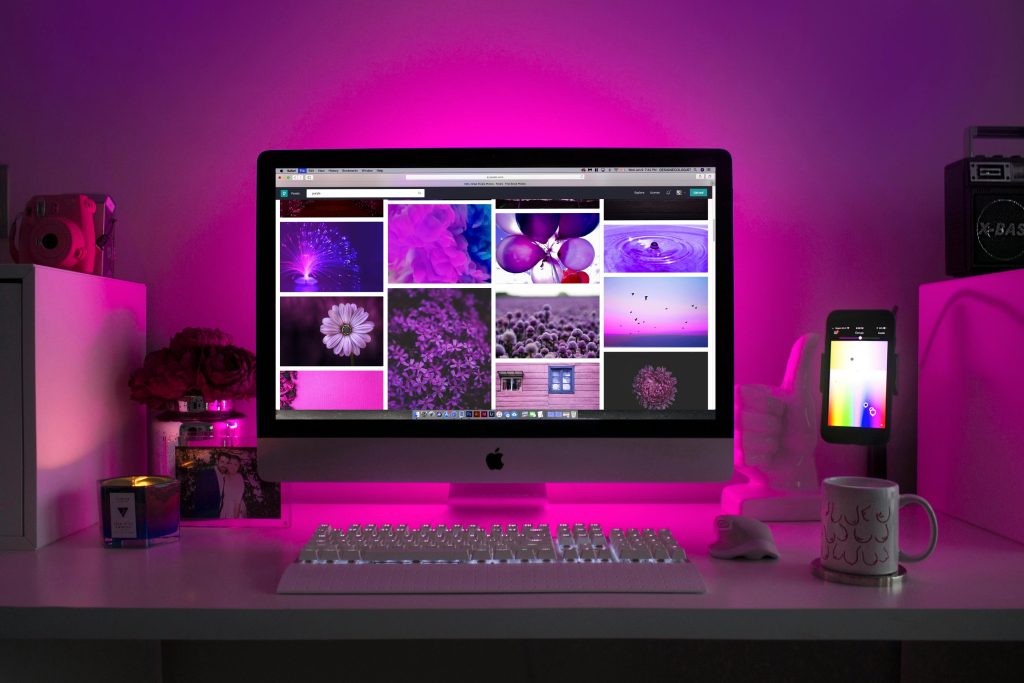Troubleshooting a Black Screen on Your Monitor: A Comprehensive Guide
Introduction:
In today’s digital age, monitors have become an essential component of our daily lives, whether for work, gaming, or entertainment. But what happens when your trusty screen fails to display anything at all and remains stubbornly black? This is exactly the situation faced by many, including one user who found themselves with a malfunctioning monitor bought in September 2024. Despite numerous attempts to resolve the issue by trying different cables and ports, their screen remained ominously blank. In this blog post, we will delve deeper into this common problem, exploring possible causes and offering comprehensive troubleshooting steps to bring your screen back to life.
Understanding the Basics: Why Does the Monitor Screen Go Black?
Before we delve into troubleshooting steps, it’s important to understand some of the common reasons why a monitor might display a black screen:
-
Cable Issues: Faulty or improperly connected cables are one of the most common causes of black screen issues.
-
Power Supply Problems: If the monitor isn’t getting power, it will obviously remain black.
-
Display Settings Configurations: Sometimes, display settings on the connected computer may cause display issues.
-
Hardware Failures: Internal component failures within the monitor could render it non-functional.
-
Outdated or Faulty Drivers: An old or corrupted graphics driver on your computer could lead to no display being output to the monitor.
-
Operating System Glitches: Occasionally, software bugs can result in display problems.
Step-by-Step Troubleshooting Guide
Step 1: Power and Cable Checks
Power Connection:
-
Ensure Proper Power Supply: Double-check that the monitor is securely plugged into a working power outlet. If the monitor’s power light is not on, consider testing the outlet with another device.
-
Inspect the Power Cord: Look for any visible damage or wear on the power cord. If there are signs of damage, consider replacing the cord.
Cable Connection:
-
Secure Cable Connection: Ensure all cables connecting the monitor to the computer are securely connected. A loose connection can easily lead to a loss of signal.
-
Switching Cables and Ports: Since the Reddit user mentioned switching between DisplayPort (DP) and HDMI cables, trying different cables is indeed a valid troubleshooting step. Testing different ports on both the monitor and your computer can help eliminate port issues.
Step 2: Monitor Hardware and Button Functionality
Button and Menu Functionality:
- Test Monitor Buttons: If pressing the monitor’s buttons doesn’t bring up the settings menu, the issue may be with the monitor itself. Ensure there’s no debris blocking button mechanisms.
Hardware Inspection:
-
Check for Physical Damage: Look for any physical damage, such as cracked screens or burnt odors, indicating internal damage.
-
Reset the Monitor: Many monitors have a reset option that returns all settings to factory defaults. Refer to the monitor’s manual for specific instructions on how to reset it.
Step 3: Computer Configuration Checks
Display and Resolution Settings:
-
Alternate Display Setup: If multiple displays are setup, ensure the correct display is selected as the primary display, and that it isn’t set to ‘Projector Only’ mode or similar settings.
-
Check Resolution Settings: Certain monitors may have trouble displaying content if the resolution is set higher than what the monitor supports.
Driver and Software Updates:
-
Update Graphics Drivers: Outdated drivers are a common cause of display issues. Updating to the latest drivers can resolve potential conflicts.
-
Operating System Updates: Ensure that your computer’s operating system is up-to-date. Sometimes, OS updates resolve hidden glitches affecting display output.
Step 4: External Device Connection Issues
Check External Devices:
- Connection to External Devices: Ensure that any external devices connected to your computer aren’t interfering with the monitor output. Try disconnecting peripherals and booting up to see if the monitor works properly.
Step 5: Advanced Troubleshooting and Professional Help
If the basic troubleshooting steps don’t fix the black screen problem, consider the following advanced options:
Signal Detection Confusion:
- Graphics Card Check: If your computer uses a dedicated graphics card, ensure it is properly seated in the PCI slot. If there is onboard graphics available, try switching to that temporarily to check if the dedicated card is faulty.
Test with Another Computer:
- Alternate Device Connection: Connect the monitor to another computer or laptop to determine whether the issue stems from the monitor or the original computer.
Professional Repair:
- Seek Professional Diagnosis: If none of the above solutions work, getting a professional technician to inspect your monitor is advisable. For newer monitors, checking warranty options might also be beneficial.
Preventative Measures to Avoid Future Black Screen Issues
While some issues can be unavoidable, many black screen problems can be mitigated by regular maintenance and attentiveness to potential warning signs.
-
Regularly Update Software: Regular updates of system software and drivers can prevent compatibility issues.
-
Avoid Overclocking: Overclocking a system can lead to instability, and by extension, display issues.
-
Environment Care: Keep your monitor in a well-ventilated, dust-free environment to avoid hardware damage over time.
By understanding the potential causes of a black screen and diligently following troubleshooting steps, you can ensure your monitor remains a reliable tool in your daily life. With proper maintenance and timely interventions, you minimize the risk of disruptions in your digital workspace. Should you encounter an issue that’s tricky to resolve, don’t hesitate to seek professional help, as preserving the longevity and functionality of your equipment is often worth the investment.
Share this content:



Response:
Thank you for sharing this comprehensive guide on troubleshooting a black screen issue with monitors. It’s a common frustration that can stem from a variety of factors, and your breakdown of potential causes and step-by-step solutions is invaluable.
To add to your troubleshooting steps, I recommend the following additional checks:
Ultimately, patience is key when tackling these issues. Regular maintenance, like keeping drivers up-to-date and ensuring cables are in good condition, can go a
Hi there, thank you for sharing the detailed troubleshooting guide regarding your monitor’s black screen issue. Based on what’s described, here are a few additional tips you might find helpful:
If the issue remains after these steps, and especially if different devices or ports produce the same problem, it might be necessary to have the monitor professionally inspected for hardware faults. Also, considering warranty options is recommended if the monitor is still within